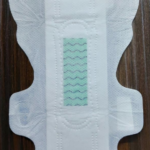Just how to Examine for Diabetes Mellitus in your home
Diabetic issues is a persistent problem that influences numerous individuals worldwide. It is identified by high degrees of blood sugar, which can result in various health problems if left unmanaged. Normal testing for diabetes mellitus is vital in regulating the condition and also avoiding problems. While it is suggested to get in touch with a healthcare professional for a precise medical diagnosis, there are numerous methods available to test for diabetes mellitus in your home.
In this short article, we will explore various techniques for testing diabetic issues in your home, including their benefits, limitations, as well as steps to carry out the tests. Please keep in mind that these residence tests need to not change professional clinical advice, however they can provide important insights into your blood sugar levels and also help you take care of the condition much better.
1. Not Eating Blood Sugar Level Examination
The fasting blood glucose examination, additionally known as the fasting plasma glucose examination (FPG), determines your blood glucose degree after an over night fast. This examination is commonly executed in the morning before having breakfast.
To carry out a fasting blood sugar test in the house, you will require:
- A sugar meter
- Test strips
- A lancet gadget
- A lancet
- A stop-watch or timer
Follow these steps to perform a fasting blood glucose examination:
- Clean your hands thoroughly with soap and also warm water.
- Put a test strip right into the sugar meter.
- Prepare the lancet device by packing it with a lancet.
- Select a fingertip as well as clean it with an alcohol swab.
- Utilize the lancet device to puncture your fingertip and also gather a tiny drop of blood.
- Location the blood onto the examination strip and also wait for the glucose meter to present the outcome.
- Tape the blood glucose level in a logbook or app for future referral.
A fasting blood sugar level listed below 100 mg/dL (5.6 mmol/L) is thought about normal, while a reading in between 100-125 mg/dL (5.6-6.9 mmol/L) indicates prediabetes. A fasting blood sugar level degree of 126 mg/dL (7.0 mmol/L) or greater on two different occasions might show diabetes.
2. Random Blood Sugar Level Test
The arbitrary blood sugar test, likewise called the laid-back blood sugar examination, gauges your blood glucose level at at any time of the day, despite when you last consumed. This examination is suitable for people that experience signs and symptoms of high blood sugar level, such as regular peeing, extreme thirst, or unusual weight management.
To execute a random blood glucose test at home, you will certainly need the exact same equipment as the fasting blood sugar examination:
- A sugar meter
- Test strips
- A lancet tool
- A lancet
- A stop-watch or timer
Here are the steps to perform an arbitrary blood glucose examination:
- Ensure your hands are tidy by cleaning them with soap and also cozy water.
- Insert an examination strip right into the sugar meter.
- Prepare the lancet tool by packing it with a lancet.
- Select a fingertip and also tidy it with an alcohol swab.
- Make use of the lancet device to prick your fingertip and also gather a tiny decline of blood.
- Apply the blood onto the examination strip and wait for the glucose meter to present the outcome.
- Tape the blood sugar level level for future reference.
An arbitrary blood sugar degree of much less than 140 mg/dL (7.8 mmol/L) is thought about typical. If your analysis exceeds this limit, it is suggested to seek advice from a health care professional for more analysis.
3. Oral Sugar Resistance Examination
A dental glucose resistance test (OGTT) analyzes just how your body procedures sugar in time. It involves drinking a sweet solution as well as gauging blood sugar level degrees prior to as well as after the consumption. This test is commonly used to diagnose gestational diabetes in expectant women but can also be utilized to diagnose type 2 diabetes.
Performing an OGTT in the house might be testing as a result of the exact timing and also logistics entailed. It is suggested to consult a healthcare expert for this test.
4. Constant Sugar Monitoring
Continuous glucose surveillance (CGM) is a technique that tracks your blood sugar level degrees throughout the day and night. It involves using a small sensing unit max skin perfector under your skin, normally on your abdomen, which determines sugar degrees in the interstitial fluid. The sensing unit transmits this information to a receiver or smartphone application, providing real-time information regarding your blood sugar level degrees.
While CGM devices are generally made use of by individuals with diabetes, they require a prescription and also can be costly. Consulting a healthcare expert is vital for accurate interpretation of the data as well bec a vision as suitable administration of the problem.
Final Thoughts
Examining for diabetic issues at home can provide important insights right into your blood sugar level levels and assist you check your problem. However, it is essential to note that house tests ought to not replace expert clinical recommendations. If you think you have diabetics issues or if you have actually been detected with the problem, getting in touch with a health care expert is crucial for precise medical diagnosis, therapy, as well as recurring monitoring of your diabetes mellitus.
Remember, early discovery and also proactive monitoring are crucial to living a healthy life with diabetes. By staying educated and also working carefully with your health care group, you can efficiently handle your blood sugar level degrees and also decrease the danger of difficulties related to diabetic issues.









